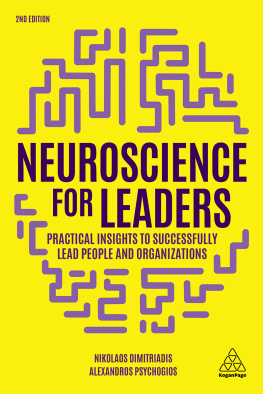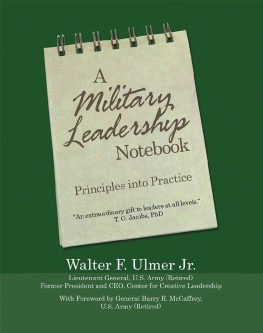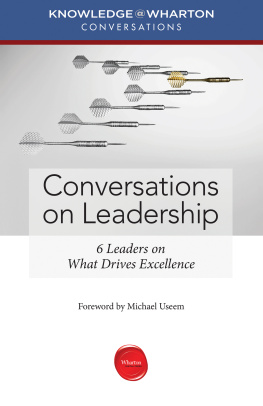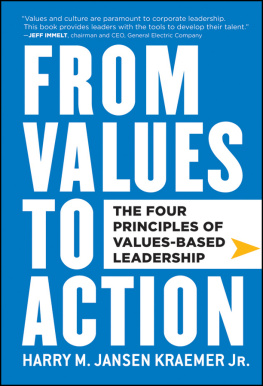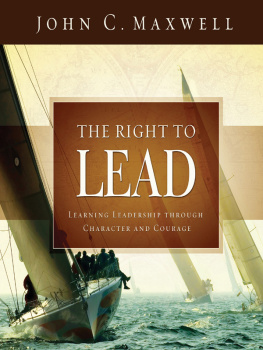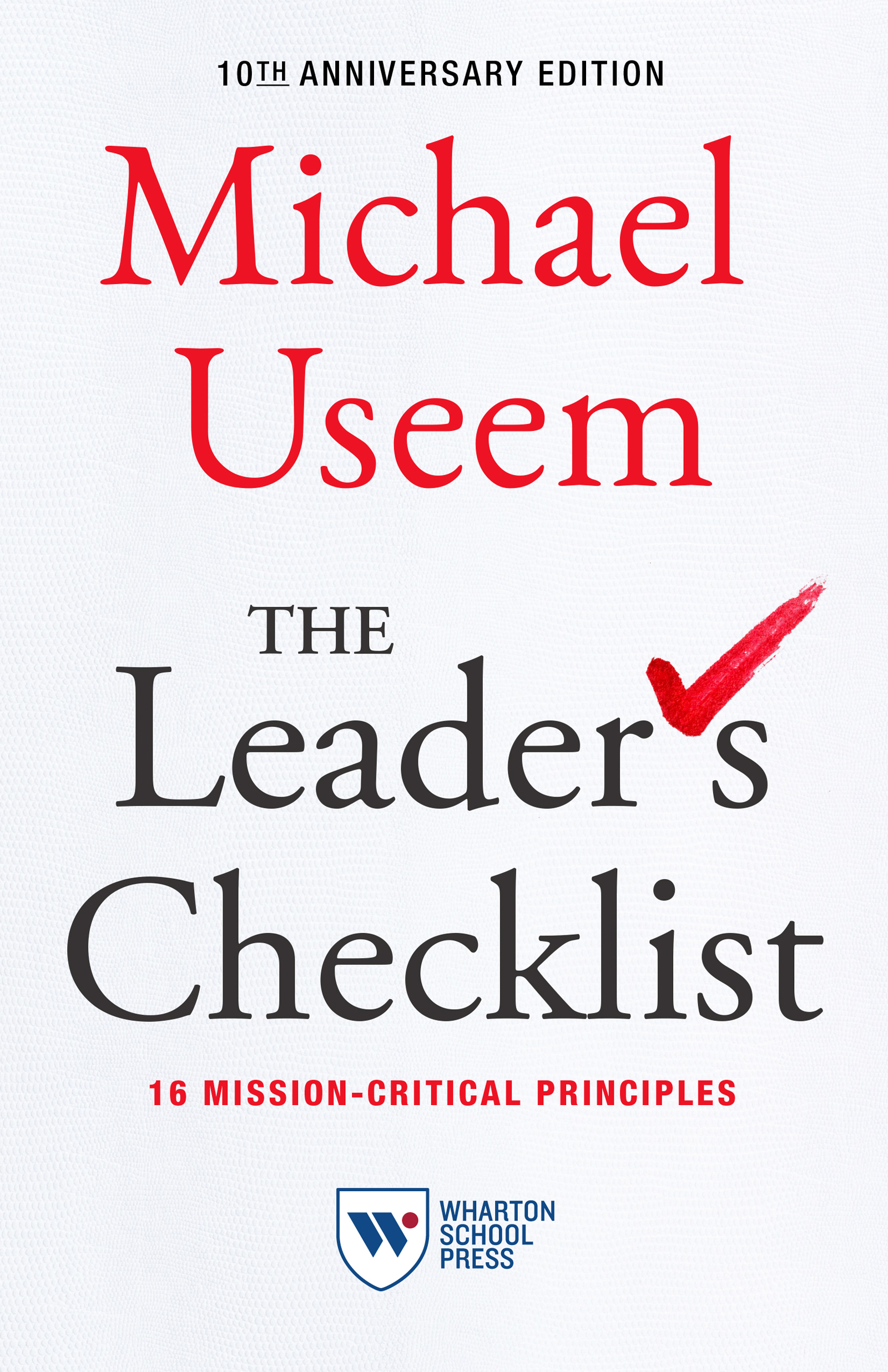Contents
Guide
Pagebreaks of the print version
Praise for the Bestselling First Edition
NAMED TO THE WASHINGTON POSTS 2011 LIST OF BEST LEADERSHIP BOOKS
One of the most brilliant, original, and exciting leadership books Ive read in a long time. It will be the most useful and concise book on leadership youll ever read!
Warren Bennis, Distinguished Professor of Business, University of Southern California, and author of Still Surprised: A Memoir of a Life in Leadership
With this compact handbook, Mike Useem provides leaders what they all say they want and need but rarely get: a kick-in-the-pants reminder of those parts of the job they have neglected. The boss is now forewarned.
Steven Pearlstein, former Washington Post business columnist and moderator of the On Leadership web page
Leading an enterprise comes down to a set of enduring principles, and The Leaders Checklist compellingly captures the most vital. Michael Useem has written the essential companion for anybody whose leadership is on the line.
Ram Charan, advisor to CEOs and boards, and coauthor of the best-sellers Execution: The Discipline of Getting Things Done and The Leadership Pipeline
The Leaders Checklist reads like an adventure yarn, but packs a goldmine of scholarship and tested observations, that surrounds a list of fifteen principles that guide and teach managers to make on-target, effective business decisions, under real pressure.
Blogcritics
The Leaders Checklist can refresh a leaders sense of purpose as well as invigorate his or her calling to lead others.
John Baldoni, SmartBlog on Leadership
The Leaders Checklist gets to the point quickly. It may well set the bar for quality writing and amount of content for other business-related digital books in the future.
Patricia Faulhaber, Suite101

2021, 2011 by Michael Useem
Published by Wharton School Press
The Wharton School
University of Pennsylvania
3620 Locust Walk
300 Steinberg Hall-Dietrich Hall
Philadelphia, PA 19104
Email:
Website: wsp.wharton.upenn.edu/
All rights reserved. No part of this book may be reproduced, in any form or by any means, without written permission of the publisher. Company and product names mentioned herein are the trademarks or registered trademarks of their respective owners.
Ebook ISBN: 978-1-61363-117-1
Paperback ISBN: 978-1-61363-118-8
Hardcover ISBN: 978-1-61363-119-5
Contents
Introduction
Why a Leaders Checklist
A business executive briefs company managers on plans for the coming year, referencing product launches, analyst concerns, and pandemic shocks. The presentation proves engaging and stimulating, yet the moment feels strangely incomplete, an opportunity unfulfilled.
Whether in person or online, managers at the briefing learn little more than they already knew about the speaker personally. They sense nothing about how their boss views them collectively or what is expected of them individually. Even worse, they hear much about the tactics of the moment but little about the longer-term goals they are expected to achieve and the strategies for doing so. The executive weaves together some of the essential threads of a leadership fabricbut falls far short of completing the whole cloth.
Sound familiar? It should. My work on leadership development in the United States and abroad confirms that meetings like this take place all the time in a multitude of languages, to the universal consternation of those present. And often the root cause is simply a lack of experience or preparation, because leading effectively is a composite but learnable skill set acquired through practice, seasoning, and discipline.
The simple expedient of building and mastering the equivalent of a pilots or a surgeons mission-critical checklistthe leaders checklistcan lessen many of these leadership lapses so often evident in routine gatherings but even when far more is on the line.
That is why I originally wrote The Leaders Checklist and now offer this updated 10th anniversary edition. Its hard to believe that a decade has passed since Wharton School Press first published The Leaders Checklist. Interest in the concept has remained keen from the outset. For a week following its initial publication, the press offered the ebook for free across all retailers, and readers downloaded more than 30,000 copies. The Leaders Checklist went on to become a Washington Post Best Leadership Book of the Year and has appeared in Chinese, Korean, and Portuguese.
In the 10 years since this book was first published, I have heard from scores of managers who have held their leadership principles up to the reality of their professional lives and the exigencies of the times they inhabit. From venues far and widethe United Nations and World Economic Forum, China and India, Mastercard and Medtronic, Google and Netflixmanagers have reported on the principles they believe need greater emphasis, further refinement, or even addition or deletion, as well as what struck home with special force. The main principles presented here, I am ever more convinced from that feedback, are timeless and placeless, though like all business conditions, the particular circumstances for the principles application are always changing, requiring continuous fine-tuning.
Every author of a book such as this hopes the volume will prove useful not only in prosperous times when living is easier but also in hard times when leadership is put to special test. Here is one confirming message for the latter from a manager at a large American corporation that had decided as a matter of business strategy to exit a market it had excelled in for a decade:
My charge has been to help manage the exit. We are now almost a year into the transition with perhaps two-and-a-half years remaining. With this change, over 1,500 employees have been impacted, but not all at once.
The senior leadership team has the constant challenge of directing, engaging, and retaining employees through the time they are needed to do the critical work of continuing to meet customer needs as well as wind down the business. In a blink of an eye last year, employees found their work changing, their leaders changing, and of course, their own personal circumstance changing. They went from a growing, ongoing concern for the business to a below the line expense that must be cut. And as a result, just as quickly, leaders have had to adapt how they lead.
I have been through divestitures and wind downs in past roles and know of some of the pitfalls that can come along. And as the program manager, I was fully prepared for the worst that could occur from people and financial results. But with this exit, the results have been remarkable. With very little time to strategize and little information to go on, plans have been met within a few percentage points, financial measures have been met or exceeded, and most important, employee satisfaction and engagement have significantly increased.
It has been amazing to watch the growth in leaders as they have had to employ many of the 15 core principles you have outlined. At the time, they didnt do it because they knew it was part of a list; they did it because it was simply the right thing to do for employees and to manage the business. Still, I found it easy to nod in agreement while reading your book since I had in front of me every day real examples of highly effective leadership in action in a very difficult situation.



